One of the most popular myths that many people believe in is that clothes from high-end brands are nothing more than overpriced junk with some fancy Italian or French brand name. But…is that really the case? Absolutely not. In this article, you’ll learn…:
(1) …4 reasons why designer clothes are, in the vast majority of cases, anything but overpriced junk.
(2) …2 reasons why you shouldn’t buy designer clothes.
(3) …where to get designer clothing for relatively cheap.
(4) … and much more!
This article was originally published on September 5th, 2022 and has been re-released on March 19th, 2023. The new version contains more information and has a better SEO compared to the original one.
Read: The ULTIMATE Guide to Giorgio Armani Lines on the Internet
#1 – Introduction
In order for me not to appear as an elitist jerk, as well to avoid any potential misunderstandings, there’re a few things that I’d like to mention before we carry on.
FIRST AND FOREMOST, the purpose of this article is NOT to criticize people who can only afford (or prefer to) wear cheaper, non-designer clothes. You, and everyone else, has a right to wear whatever clothes you want and feel comfortable in… unless you live in some Middle Eastern shithole like Afghanistan, Iran or the Gaza strip.
SECOND, when you’re buying clothes, the most important things to consider are fit and whether you feel great wearing them – EVERYTHING else is secondary. For example, if you’re forced at gunpoint to choose between say a Massimo Dutti shirt which fits you nicely and a Gucci shirt which doesn’t…choose the former. In case both fit you nicely…choose the latter!
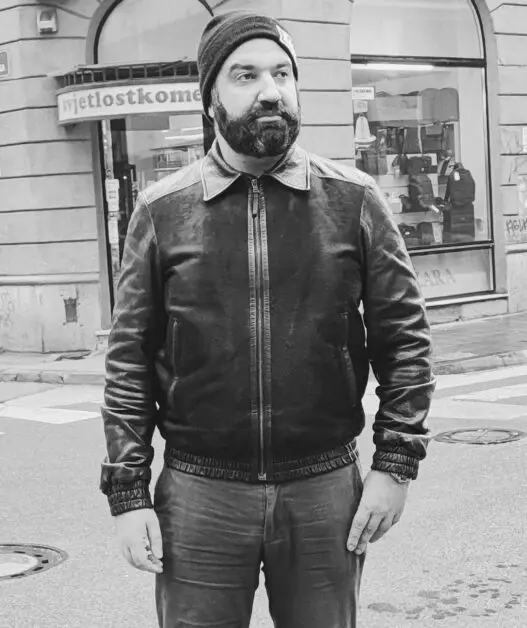
THIRD, keep in mind that not all high end brands are of the same quality – there are plenty of designer brands that make expensive products (not just clothes) of excellent quality, as well as those that make expensive products of average to poor quality.
FOURTH…NEVER, EVER EVER EVER pay full retail price for a high end piece of clothing! If you’re patient and know where to look, a lot can be had for relatively cheap, like the Prada leather jacket that I’m wearing in the picture above, which I bought on eBay for $400 (it was brand new, with tags). I don’t know what it’s original price was, but it was probably in the thousands.
And FIFTH, this article is written from a prospective of a person who owns plenty of designer and non-designer clothes. Oh…did I forget to mention that I’m not affiliated with any brand?
With these things out of the way, let’s move on, shall we 🙂 ?
Read: The ULTIMATE Guide to Ralph Lauren Lines
#2 – 4 Reasons TO Buy Designer Clothes
High- end Clothes are Made from Highest Quality Fabrics
In order to make clothes of exceptional quality, the vast majority of high end brands use genuine, natural, and often organic materials of exceptional quality such as high momme count silk, long fiber cotton and high-grade cashmere. Some, like Brunello Cuccinelli (a very good and underrated brand) are going above and beyond in order to get them – the owner of that company, Brunello Cuccinelli, personally travels every year to the mountains of Mongolia and China to purchase cashmere directly from the producers. Clothes made from such materials (such as the Brunello Cucinelli cashmere blouson I’m wearing in the picture below) feel better and will, like wine and rock music, get better with age if you take good care of them (for example, high-grade cashmere will become softer and more comfortable with age and high-quality leathers like nubuck will develop patina).

The same can’t be said for clothes coming from middle-end (Hugo Boss and Tommy Hilfiger) and low-end (H&M and Zara) brands. These brands, in order to be more competitive on the market, have to cut corners wherever they can. Thus, their clothes will be made from various synthetic fabrics such as polyester, nylon and viscose or from average to low quality natural materials, such as silk with a medium/low momme count, short fiber cotton and medium/low-grade cashmere. Clothes made from those fabrics, despite looking similar to their high end counterparts, won’t be as comfortable and won’t last for too long even if you take good care of them – for example, low-quality cashmere will pile and short fiber cotton isn’t too resistant to abrasion.
Read: The ULTIMATE Guide to Hugo Boss Lines on the Internet
High -end Clothes are Better Made
The vast majority of high-end clothes are manufactured to very high standards – each piece is, with a great attention to quality and detail, cut, sewn and finished by a relatively small and skilled team of well-paid artisans. Because of this and the fabrics they’re made of, designer clothes are quite durable and, if you take care of them, will last you for decades. The Ermenegildo Zegna sports coat that you see me wearing in the picture below is, at the time of this writing, more than 33 years old (it’s 2 months older than me). The main reasons why it’s still going strong is because it’s made from high-quality wool (Ermenegildo Zegna is known not only for their high-quality clothes, but also for their fabrics – especially wool and cashmere) and is, as you might’ve guessed, very well made. If I take good care of it, I’m pretty sure that it’ll last for another 33 years!
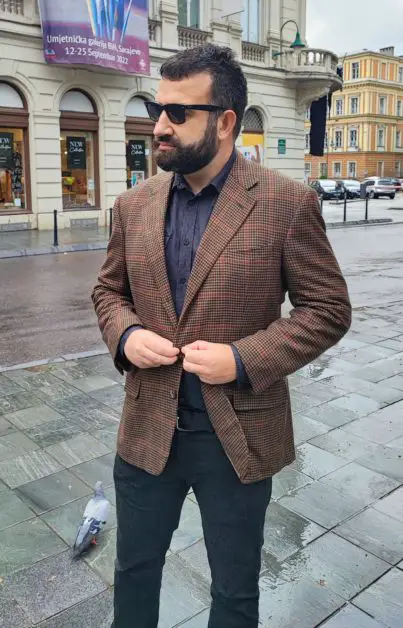
On the other hand, clothes from middle-end and low-end brands are made from cheaper, less durable materials and to lower standards than that of their designer counterparts – their stitching will be average to poor, their seams won’t be as strong, their hardware (zippers, buttons) won’t be of high quality and so on. Because of this, they won’t last for very long – have you ever seen a 20-year-old H&M blazer in great condition? Highly unlikely. Have you ever seen a 33-year-old Ermenegildo Zegna sport coat? You did just less than a minute ago 🙂 .
Read: The WORLD’S ULTIMATE Guide to Prada Lines
Buying High-end Clothes Saves You Money in the Long Run
Believe it or not…buying high-end clothes may actually help you financially in the long run because you’ll…:
(1) …rarely feel the need to replace them since they’ll, in the vast majority of cases, last for years (if not decades).
(2) …be far less likely to impulse buy. For example, if you buy two high-end designer pieces for $300, it’ll be hard to justify the purchase of another two. On the other hand, if you buy two low/mid-range (that is, cheaper) garments for $50, it’ll be easy to justify the purchase of another two. After you’ve done this, it’ll be easy to justify the purchase of yet another two. This circle continues until you’re either broke or your closets are full of low/mid-range clothes that you don’t really like.
In order to prove the above statements, I’ll use 2 hypothetical examples.
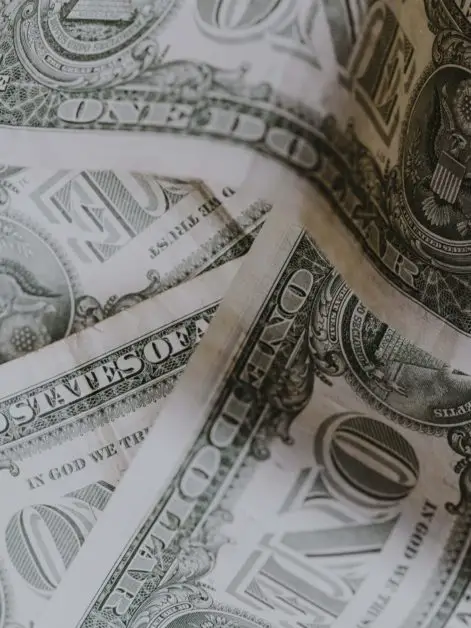
In our first hypothetical example, we have Joe and Jane. Joe prefers high-end clothes. Jane, on the other hand, prefers to buy low-end clothes (and probably thinks that Joe is a dumdum for spending so much cash).
One day in a galaxy far, far away, Joe decided to buy five new outfits on eBay, each one consisting of a pair of Jacob Cohen jeans (great brand) and a Prada t-shirt. He paid $150 for each pair of jeans and $100 for each t-shirt. That’s $1250 in total (150 x 5 + 100 x 5 = 750 + 500 = 1250).
On the other hand, Jane went to H&M where she bought five new outfits, each one consisting of a pair of jeans and a t-shirt. She paid $30 for each pair of jeans and $15 for each shirt. A few days later, she bought two more outfits that were on sale on H&M, consisted of two pairs of jeans (each costing $20) and two shirts (each costing $10). In total, she paid $285 (30 x 5 + 15 x 5 + 20 x 2 + 10 x 2 = 150 + 75 + 40 + 20 = 285).
So far, Joe spent $1250, while Jane spent $285.
Four months later, Joe’s clothes still look great. The same can’t be said for Jane’s – hers are falling apart! Because of this, Jane went back to H&M where she bought five new outfits, each one consisting of a pair trousers and a shirt. She paid $30 for each pair of jeans and $15 for each shirt. A few days later, she bought two more outfits that were on sale on H&M, consisted of two pairs of jeans (each costing $20) and two shirts (each costing $10). In total, she paid $285 (30 x 5 + 15 x 5 + 20 x 2 + 10 x 2 = 150 + 75 + 40 + 20 = 285).
So far, Joe spent $1250, while Jane spent $570.
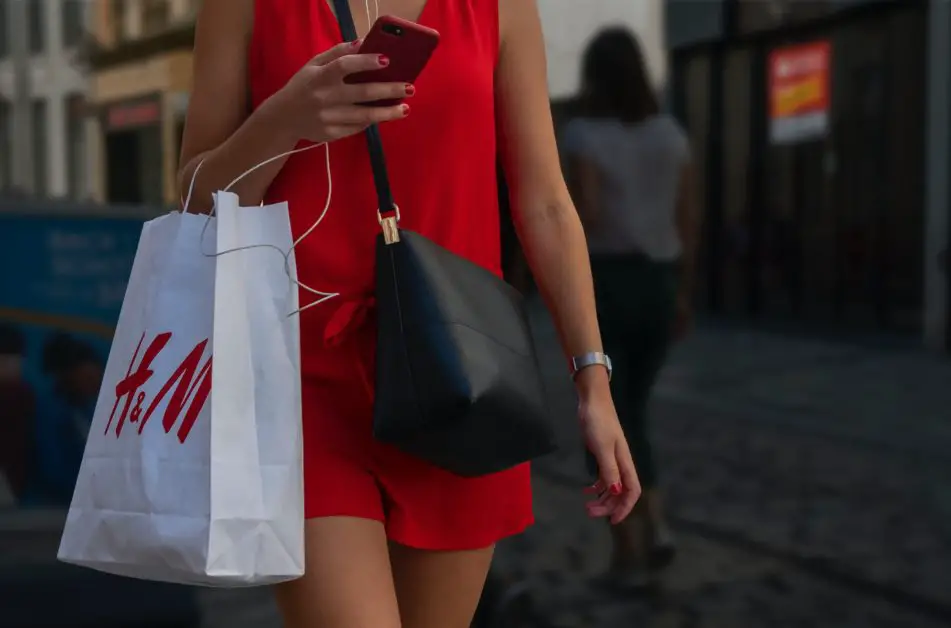
Another four months later, Joe’s clothes are still holding up. The same can’t be said for Jane’s – all the clothing she bought so far is falling apart! Because of this, Jane went back to H&M where she bought five new outfits, each one consisting of a pair trousers and a shirt. She paid $30 for each pair of jeans and $15 for each shirt. A few days later, she bought two more outfits that were on sale on H&M, consisted of two pairs of jeans (each costing $20) and two shirts (each costing $10). In total, she paid $285 (30 x 5 + 15 x 5 + 20 x 2 + 10 x 2 = 150 + 75 + 40 + 20 = 285).
So far, Joe spent $1250, while Jane spent $855.
This process repeats itself during the next five years. During this period, Jane went 15 more times to H&M, where she spent $285 every four months on average (285 x 5 = 1425) whilst Joe replaced his outfits only once, for the same amount of money ($1250).
After a 6-year mark, Joe spent $2500 while Jane spent $5130 (more than double compared to Joe).
Who played it smarter? Joe…or Jane?
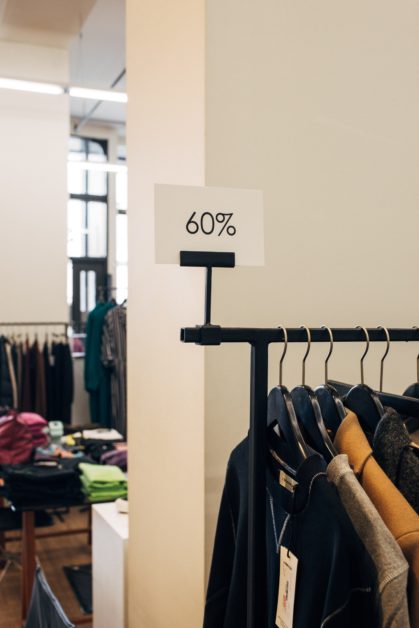
In our second hypothetical example, we have Joe and Jack. Joe prefers high-end clothes whilst Jack prefers clothes from middle-end brands.
One day, in another galaxy far, far away, Joe decided to buy five new outfits on eBay, each one consisting of a pair of Jacob Cohen jeans (great brand) and a Prada t-shirt. He paid $150 for each pair of jeans and $100 for each t-shirt. That’s $1250 in total (150 x 5 + 100 x 5 = 750 + 500 = 1250).
Just like Joe, Jack bought five new outfits on eBay, each one consisting of a pair of Levi’s jeans and a Tommy Hilfiger t-shirt. He paid $70 for each pair of jeans and $50 for each t-shirt. A few days later, he bought another two outfits that were on sale also on eBay, consisted of a pair of jeans (each costing $60) and a shirt (each costing $40). That’s $800 in total (70 x 5 + 50 x 5 + 60 x 2 + 40 x 2 = 350 + 250 + 120 + 80 = 350 + 250 + 120 + 80 = 800).
So far, Joe spent $1250, while Jack spent $800.
A year later, Joe’s clothing still looks great. The same can’t be said for Jack’s – his is falling apart! Hence, he went to eBay where he bought five new outfits, each one consisting of a pair of Levi’s jeans and a Tommy Hilfiger t-shirt. He paid $70 for each pair of jeans and $50 for each t-shirt. A few days later, he bought another two outfits that were on sale also on eBay – each consisted of a pair of jeans (each costing $60) and a shirt (each costing $40). That’s $800 in total (70 x 5 + 50 x 5 + 60 x 2 + 40 x 2 = 350 + 250 + 120 + 80 = 350 + 250 + 120 + 80 = 800).
So far, Joe spent $1250, while Jack spent $1600.
Another year later, Joe’s clothing still looks great. The same can’t be said for Jack’s – his is falling apart! Hence, he went to eBay where he bought five new outfits, each one consisting of a pair of Levi’s jeans and a Tommy Hilfiger t-shirt. He paid $70 for each pair of jeans and $50 for each t-shirt. A few days later, he bought another two outfits that were on sale also on eBay – each consisted of a pair of jeans (each costing $60) and a shirt (each costing $40). That’s $800 in total (70 x 5 + 50 x 5 + 60 x 2 + 40 x 2 = 350 + 250 + 120 + 80 = 350 + 250 + 120 + 80 = 800).
So far, Joe spent $1250, while Jack spent $2400.
This process repeats itself three more times during the next three years. During this time, Jack went on eBay three more times in order to replace his outfits, spending $800 on average (800 x 3 = 1600). Joe did so only once, for the same amount of money ($1250).
After a 6-year mark, Joe spent $2500 while Jack spent $4800 – almost double more than Joe did.
Who played it smarter? Joe…or Jack?
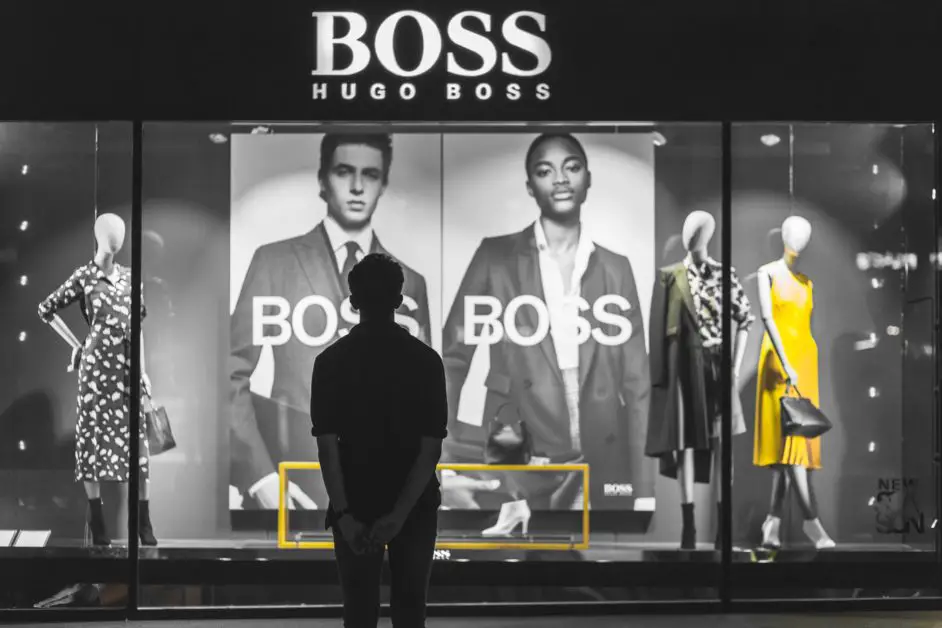
Read: Where is Armani Made? Is it in Italy?
Buying High-end Clothes is Good for the Environment
If you want to live an eco-friendlier lifestyle, buying designer clothes (as well as visiting second-hand and vintage stores) is a good way to start.
Let me explain why.
As I stated before, high-end clothes, in the vast majority of cases, more comfortable and durable than their middle-end and low-end counterparts. Because of this, you’re not only far less likely to throw them away, but you’ll also use fewer natural resources since you’ll buy less of them.
In case you ever “get tired” of your high-end piece, you can (re)sell it – you’ll have no trouble doing that you’ve taken good care of it.
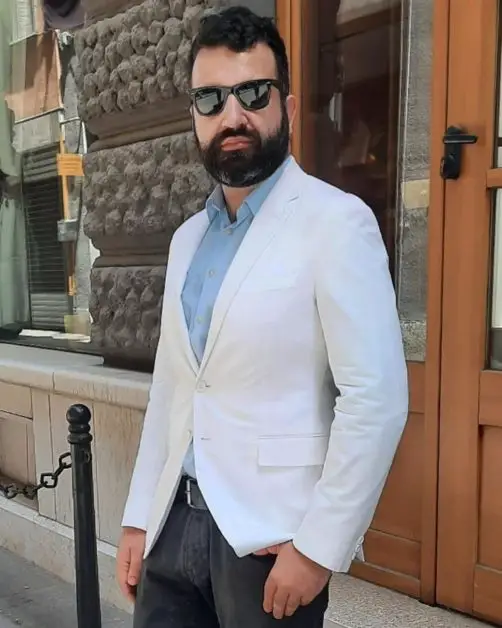
The white Ralph Lauren Black Label blazer that I’m wearing is, like all garments from this Ralph Lauren line, built to last – it’s made from a very high-quality cotton and is of full canvassed construction. Because of this, I’m quite sure that it’ll not end up in the trash anytime soon – like most of its Zara/H&M counterparts tend to do after a couple of months of repeated use. In case I ever tire of it (which is highly unlikely), I can sell it back on eBay for almost the same price I bought it – €150 (it retailed for €1195).
Read: The BEST Guide to Ermenegildo Zegna Lines IN THE SOLAR SYSTEM (and Beyond)
#3 – 2 Reasons NOT TO Buy High-End Clothes
To Be Unique
One of the main reasons why most people buy high-end clothes is because they want to wear something that nobody else does. In other words, they want to feel unique.
As a person who owns (and sold on eBay) a lot of high-end clothes, there’re two important things that you should be aware of as far as they’re concerned.
FIRST, the vast majority of designer clothes, believe it or not, don’t have unique designs! For example, in the above picture, you saw me wearing a white Ralph Lauren Black Label blazer. Does it look good on me? Yes. Does it make me unique? No, since a lot of people wear almost identical blazers during the spring and summer. The same is the case with many other high-end clothes – yes, they look great and generally are of high quality but they’re not unique!
SECOND, TRULY unique high-end clothes are either made explicitly for fashion shows (and aren’t usually sold) or are EXTREMELY expensive (in the vast majority of cases, they’ll cost tens of thousands of Euros /Dollars).

In case you REALLY want to have a unique piece that nobody in your town (or even in your country) has, consider buying something vintage. Vintage clothes, besides having some cool and unique designs, are of great quality and, in the vast majority of cases, relatively cheap. In one of my previous articles, I’ve already talked about the vintage Giorgio Armani cashmere coat (which you can see wearing on the picture above) that I had paid less than €20. This coat isn’t only very comfortable and well-made…it’s also very unique! How do I know that? Because I haven’t seen anyone wearing anything similar!
Read: The MOST COMPREHENSIVE Guide to Corneliani Lines IN THE UNIVERSE
” XYZ Celebrity Wore That Piece! “
The next (and the stupidest) reason why many people are buying designer clothing is simply because some celebrity wore it. What many tend to forget is that (s)he…:
(1) … most likely got that piece for free and got paid a lot of money just to wear it during some specific event(s).
(2) … is, at the moment, much more well off than they are. For many celebrities, $5000+ is nothing special. On the other hand, $5000 is quite a lot of money for he vast majority of us non-celebrities.
My friends, don0t fall for the hype…there’s no point of spending thousands of dollars trying to be a poor imitation of somebody else – use them to become the best version of yourself instead.

Read: Where Are Ralph Lauren Clothes Made? In the US? Or Perhaps in China?
#4 – Where to Get High-end Clothes for Cheap
Now that I have busted the myth that buying designer clothes means just paying lots if money for some fancy Italian or French brand name…you must be wondering how to get them without going bankrupt? In this section, I’ll show you how!
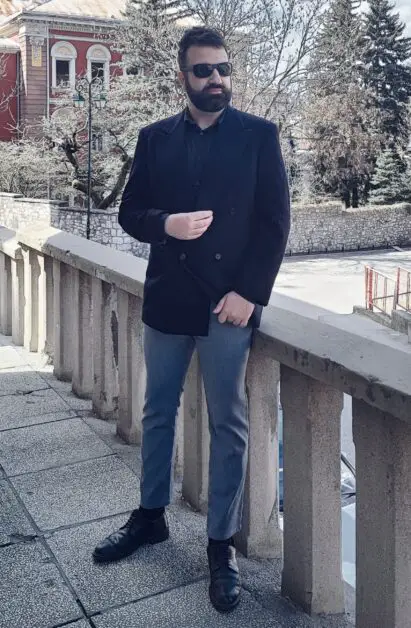
Read: Are Giorgio Armani Suits REALLY That Good?
Thrift and Vintage Stores
Despite sharing economy becoming more popular than ever (environmental concerns, COVID-19, war/SMO in the Ukraine), many people still see thrift stores as places that sell smelly and damaged clothes. For me, they’re places where one, if persistent enough, can find plenty of high- end clothes for practically free!
One of my latest thrift store finds is this vintage Corneliani cashmere coat you can see wearing in the image below, which I’ve paid around €5 in total – a total steal for something that retailed for possibly around €1000 :).
If you prefer to avoid sifting through tons of smelly and damaged low-quality clothes in order to find a designer piece of clothing (which isn’t (too) damaged) or want to wear something vintage and/or of a more timeless design, then vintage shops are the places you should pay a visit to. Despite their wares usually being (far) more expensive compared to those from second-hand shops, you can always find truly unique clothes there… still for relatively cheap!
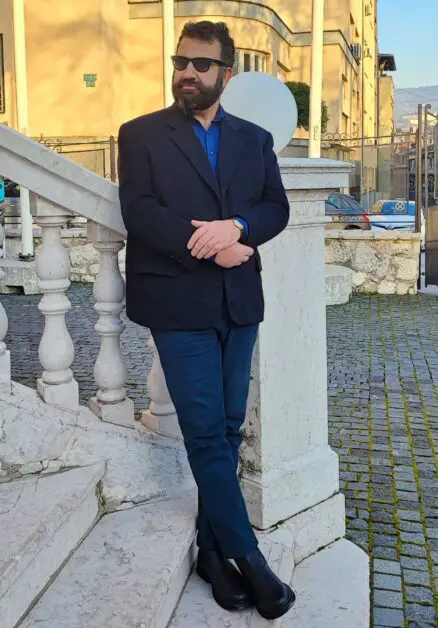
Read: 5 Reasons to Shop at Thrift Stores
Online
The Internet offers us many opportunities such as paying our bills from the comfort of our homes (who wants to rather wait in line?), working literally in our pajamas…and buying high-end clothes, both used and brand new, for dirt cheap! If it weren’t for the Internet, I wouldn’t never be able to get the aforementioned white Ralph Lauren Black label blazer and Prada leather jacket for pennies! The websites I use AND recommend buying designer clothing from are:
(1) eBay.
(2) Vestaire Collective.
(3) Online forums. If you’re looking for high-quality menswear, then check Styleforum’s Buy & Sell section. Unfortunately, there aren’t any female-centric forums which have a dedicated Buy & Sell section (that I know of). If there are some, do let me know in the comments!

Read: The DEFINITE Guide to ALL Canali Lines
Outlets
Slow-moving, as well as defective inventory, is a nightmare for every manufacturer and retailer. Not only does that hurt their sale numbers, but it also takes up warehouse space that could be utilized to stock faster-selling items. In order to get rid of it as quickly as possible and to compensate for the costs that went into its production or purchase, many manufacturers and retailers sell it through specialized stores – outlet stores.
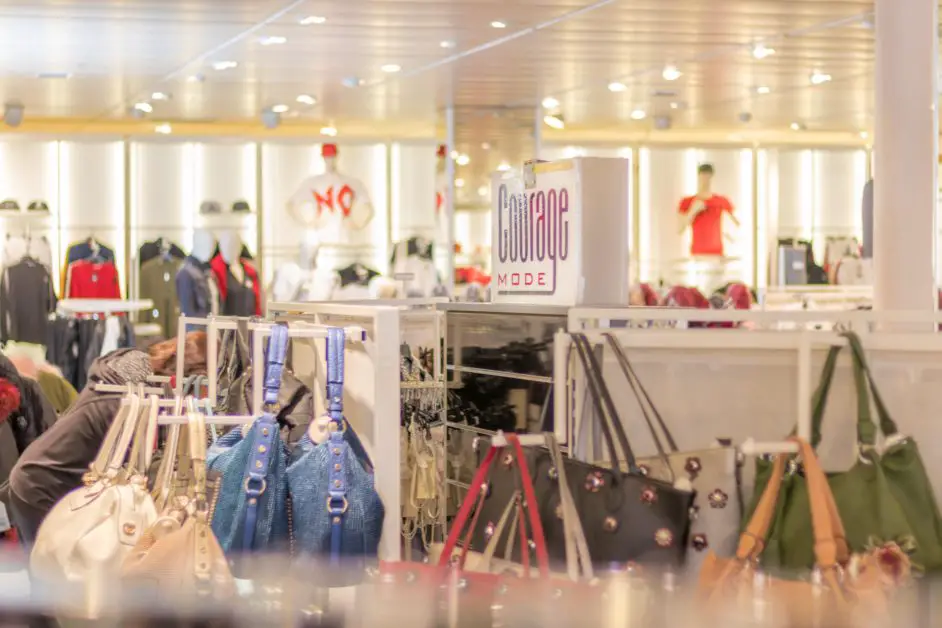
Many outlet stores are brick-and-mortar stores and they’re usually located in popular bustling city locations. In the last decade however, they’re gradually being replaced by online outlets (like SaksOff5th and The Outnet) because people would rather shop from the comfort of their homes than going there in person. On those sites, you can get lots of high-end clothes for relatively cheap – especially if you use coupons and promo codes!
Read: WHERE to Find and Buy High-end and Designer Clothing FOR CHEAP
#5 – (More Than) A Few Parting Words
From what I have experienced online and in real life, people who understand more criticize less and people who understand less criticize more. When the topic of high-end clothing is concerned, I couldn’t help to notice that many people who criticize high-end clothing have probably never owned (or probably even touched) a high-end piece. How do I know? Because I listened to them on YouTube and read their articles. Some of the most common arguments I read (and heard) is that high-end clothes… :
(1) …are too expensive (while showing their MSRP’s as proof). That’s certainly the case…if you don’t know where to look. If you’d like to know how to get them for far, FAR less than that, then check these two articles.
(2) …is, quality-wise, not much different than their low and middle-end counterparts. In the vast majority of cases, that’s not true – high-end clothes are made of very high-quality fabrics (which cost a lot) and are constructed better (which also costs). If you don’t believe me, compare a cashmere sweater from Massimo Dutti and Brunello Cucinelli (I did) and you’ll see what I mean.
(3) …doesn’t offer much value for the money. That’s not the case – unless you bought your high-end piece at MSRP.
(4) …are ugly. Although there are indeed some extremely ugly high-end pieces, the vast majority of them look “normal” – you won’t be standing out from the crowd should you wear them.
Understand and experience more, criticize less.
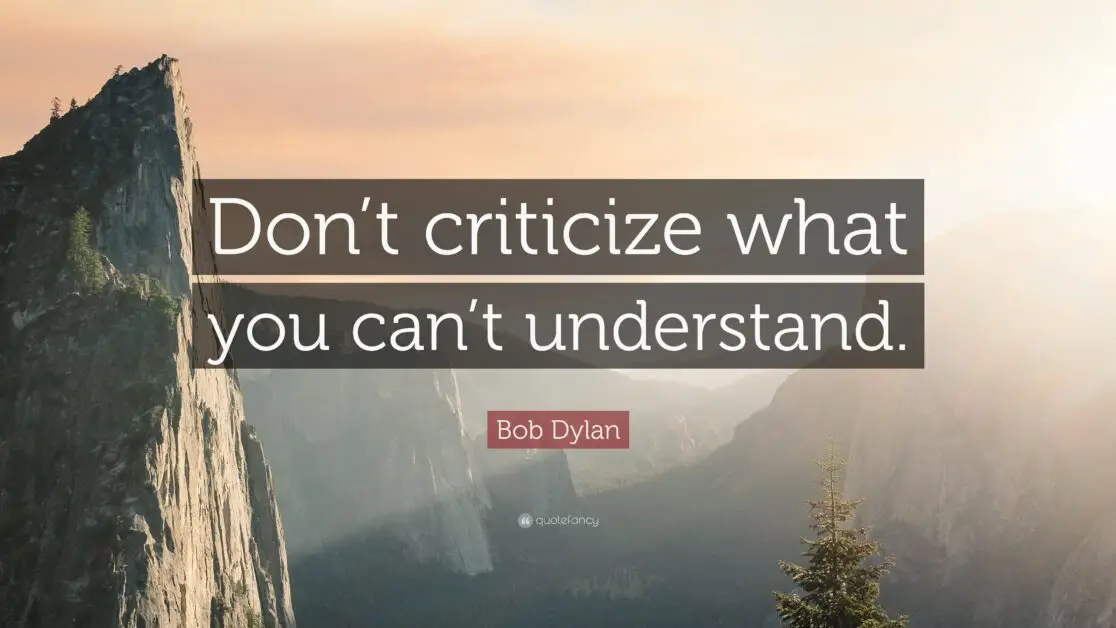
Thank you for reading. If you’ve liked this article and want to see more like them, make sure you subscribe to the e-mail list and to follow me on Instagram!
Until next time.
Your man,
-Leon


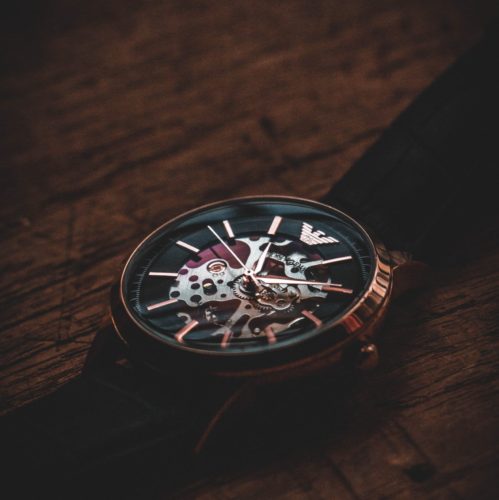
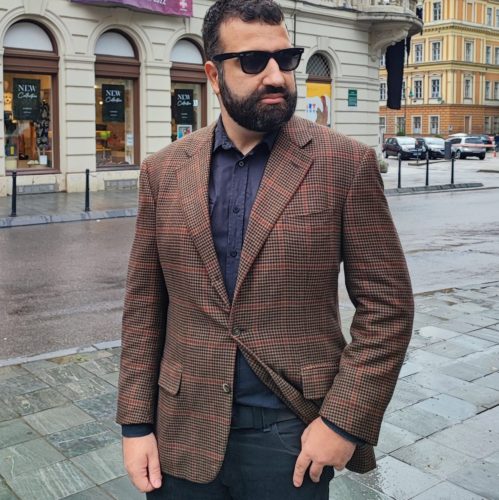
Pingback: The MOST COMPREHENSIVE Guide to Corneliani Lines IN THE UNIVERSE – Findnolimits
Pingback: The BEST Women’s Dress Watches Under $100 You Can Buy in 2023 – Findnolimits
Pingback: How to Buy HIGH-END CLOTHES on eBay FOR VERY CHEAP – Findnolimits
Pingback: 5 Reasons to Shop at Thrift Stores – Findnolimits
Pingback: WHERE to Find and Buy High-end and Designer Clothing FOR CHEAP – Findnolimits
Pingback: How to Buy GENUINE DESIGNER CLOTHES FOR CHEAP on eBay – Findnolimits
Pingback: The BEST Guide to Zegna Lines IN THE SOLAR SYSTEM (and Beyond) – Findnolimits
Pingback: Best Women’s Dress Watches Under $100 You Can Buy in 2023
Pingback: Why You Should NEVER CONSIDER Buying Fake Products
Pingback: The Most Comprehensible Ralph Lauren Labels Guide on the Internet
Pingback: Second-hand Shops and 5 Reasons Why You Should LOVE Them
Pingback: How to Get High-End Clothing FOR CHEAP - Findnolimits